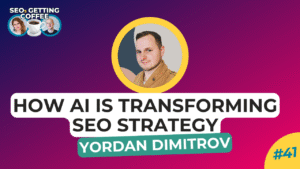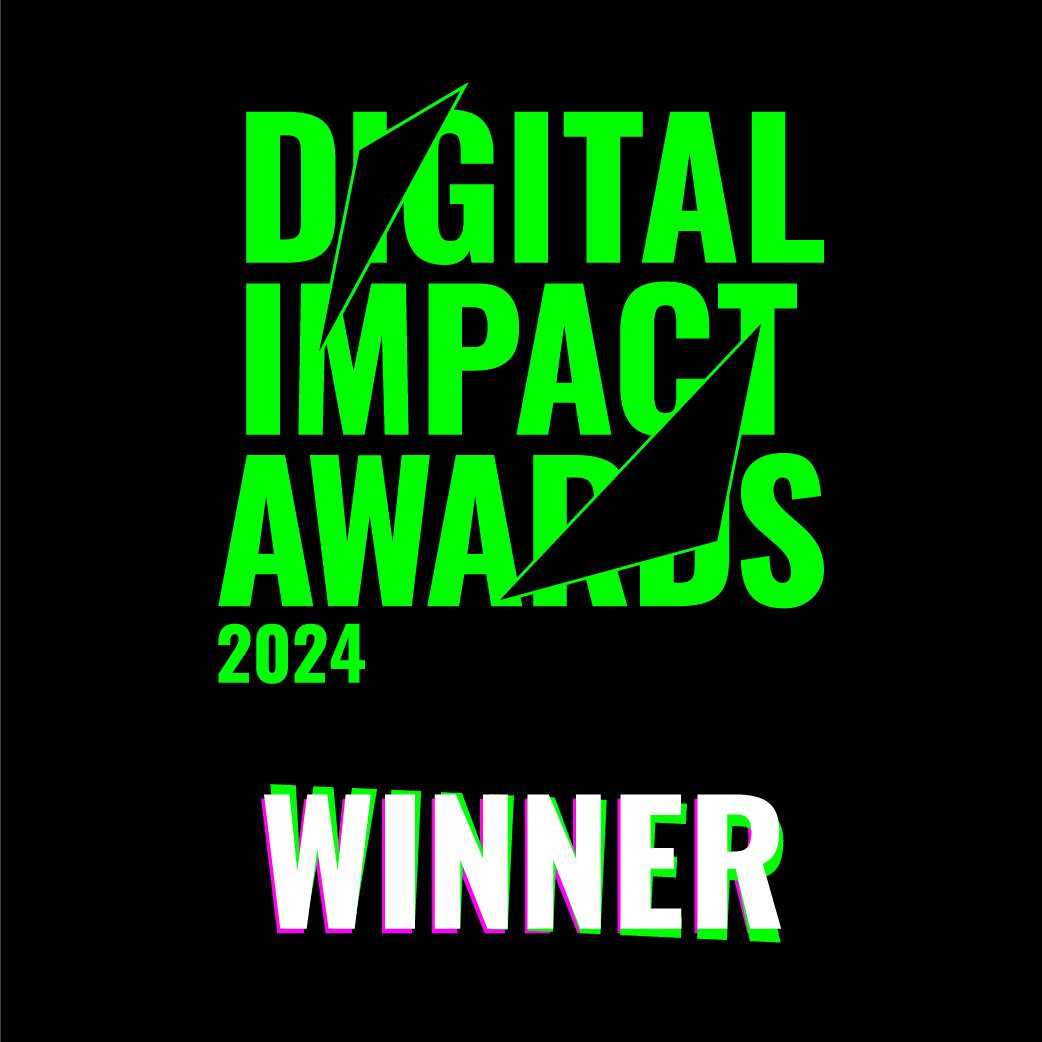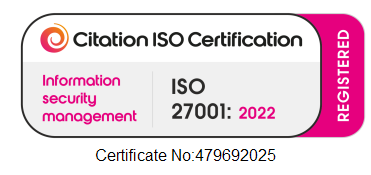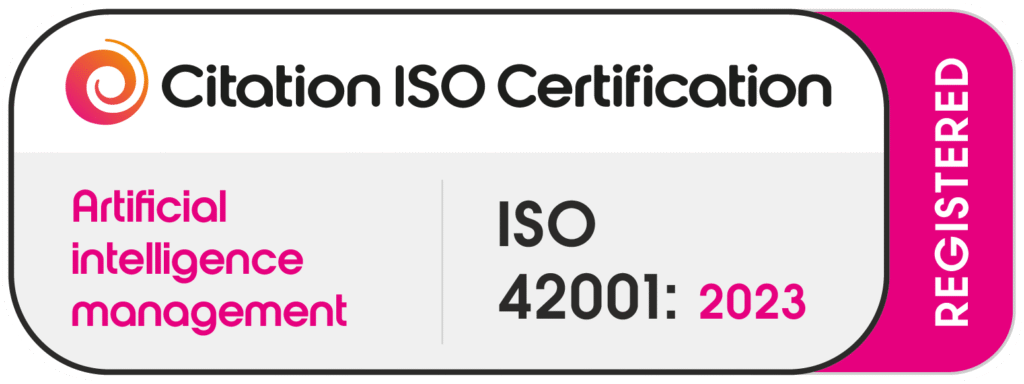Like almost every topic in marketing, and content marketing specifically, content pillars are both a simple AND a complex topic. While understanding what they are is simple, not many brands have succeeded in using the strategy effectively.
In this blog post, we will dive into the dialectic of the content pillar. Find out the easy part: what exactly a content pillar is. Then, dig deeper into the tricky part: how content pillars have changed in the last few years and how marketing managers can utilise them to improve their brand’s content marketing strategy.
In this post
What Is a Content Pillar?
A content pillar is a comprehensive form of content marketing covering a specific topic or theme which has been broken into smaller, more specific subtopics. To use an analogy of a book, your content pillar is the book with chapters relevant to understanding the topic.
In marketing, the term is often used with SEO and social media. The definition will be the same in both channels, and both will need some legwork before you jump into using them. The first step is deciding which pillars you will be building and why. To do this, you will need to do at least four essential steps:
- Understand your business goals – your pillars, no matter the channel, must be aligned with your business goals. If, for this quarter, your key performance indicator (KPI) is customer retention, then choosing topics that support this goal is key. But to plan this, you need to have clear KPIs.
- Understand your audience – this one is a no-brainer, and honestly, it’s essential for setting up any business goals. Building customer personas is still a useful exercise to do for your brand, as long as they are not limited to simply deciding on job roles! Dig deeper into getting to know your customers – their needs, goals and pain points. Use your Customer team knowledge and your sales team and talk to customers!
- Foster the distribution mindset – One of the biggest mistakes we’ve seen is brands creating content pillars and not planning distribution. It might sound counterintuitive to plan how to distribute something before deciding what it actually is. But rather than thinking about it in a linear way, you need to think about it as a change in mindset. Not planning early on how you will get your pillar content distributed and repurposed is a sure way for it to end up in a content graveyard after the first publication.
- Plan how you will measure success – trying to show the direct impact of your content marketing on revenue is notoriously hard. But it is possible if you map out the right KPIs to the right goals and stop chasing perfect attribution. You might not be able to use this content pillar to provide X amount of revenue. Still, you will be able to report on metrics such as engagement rate, sessions, or reach among your target audience for content marketing, which are valuable metrics as long as you did steps 1 and 2 and made sure the pillars are business and audience-relevant!
Content Pillars in SEO
We are fans of Hubspot, and as far back as 2017, they started talking about content pillars or topic clusters to make sense of the changes in consumer behaviour and, as a result, in search algorithms.
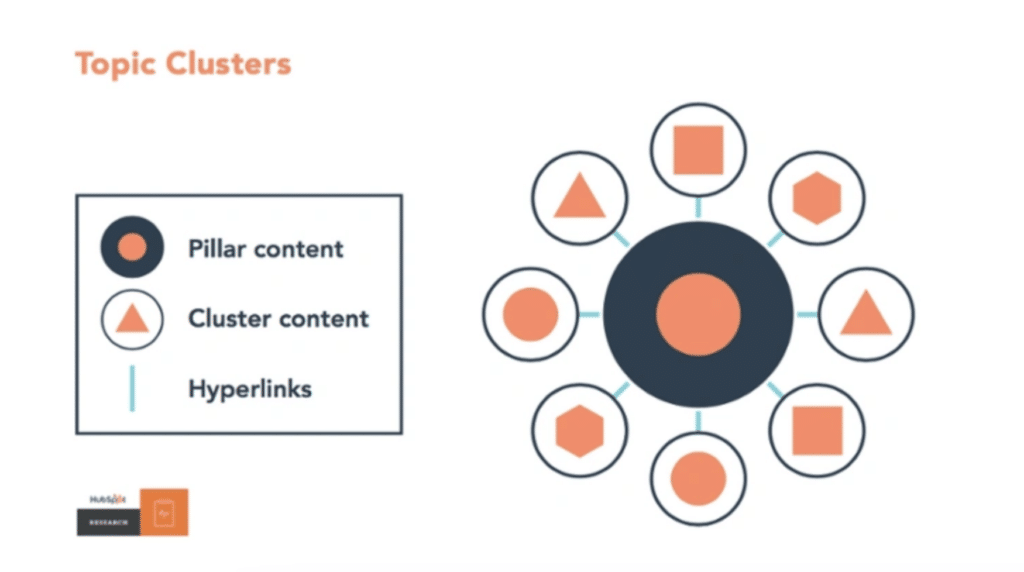
The premise was simple: brands should be building topic clusters or content pillars around topics that are relevant to their brand and their audience. SEO should no longer be about simply finding keywords you want to rank for. SEOs needed to pivot to understanding topics and subtopics that often target those longer, more conversational search queries that were becoming the norm in search.
As search engines started to be smarter with understanding intent and providing searchers with a more comprehensive look at topics, many websites pivoted their content strategy towards the topic cluster model. In this model, your website (or website sections) are organised around topics, and your blog posts cover the long-tail conversational subtopics that target particular keywords. Of course, interlinking the pieces was essential.
One example of this strategy is the rapid emergence of Essentials Guides to XXX Topic, where the guide serves as the central pillar page; the sections within the guide cover specific subtopics and then link to individual blogs that cover the subtopic more in-depth.
Today, with the development of large language models (LLMs) that can perform a variety of natural language processing (NLP) tasks, we are no longer talking about creating content based on keywords alone. We are talking about three main terms:
- Topic
- Entities
- Keywords
Topics in SEO have still remained the same, and the old content pillar approach still applies.
Where things get a bit more complicated and technical is when we look at entities.
Entities in SEO are hard to understand even for hardcore SEO-er. And yet, they are super important in understanding where the search is going! Particularly with the emergence of AI-powered Bing and Google’s Search Generative Experience (SGE).
While it’s easy to think about entities simply as equivalent to subtopics in the pillar page content strategy, it often leads to missed opportunities. In the older content pillar approach, the subtopics were very much connected to keywords – often long tail keywords. Entities are not keywords, although they can be confused as keywords that complicate things, right?
Entities in relation to Google can be found as far back as their 2016 Patent, which was only granted in 2019. It holds a great visual example of an entity – see below.
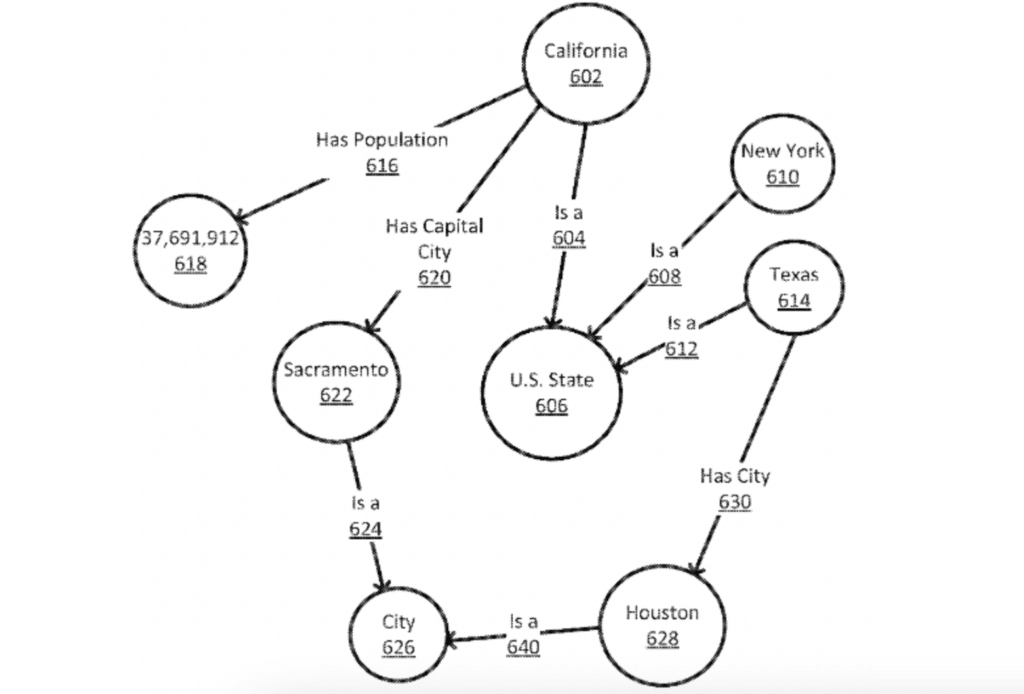
Entities are not keywords; they are numerical identifiers Google uses in the Knowledge Graph. They are records in a database.
But they are still a very useful concept for SEOs and Marketing Managers looking to use pillar pages as a content strategy. Google will use entities to understand user intent, context, and the relationship between words, which is why they are so important.
Lastly, a term that is important to understand when it comes to SEO pillar content is keywords. As the name suggests, these are search phrases or terms a searcher types into a search engine. Your keywords will be topic-related AND entity-related.
There are many resources out there by far smarter experts in this area that go in-depth into the interplay between entities, topics and keywords and will give you some excellent background in understanding entities and how to use them in your content marketing. If you want to truly understand entity SEO and Natural Language Processing (Google uses NLP to better understand search queries and content) follow Olaf Kopp on LinkedIn, a top expert on the subject.
But, most won’t go too deep into the rabbit hole here as understanding this to an expert level requires an understanding of machine learning and some pretty technical things. For a Marketing Manager, there are a few things to take away that will allow you to create better content pillar pages. These are:
- The old “see what ranks and do it better” is a complex task. Don’t just replicate results and expect to get love from Google. To rank better, you need to add your own spice to the topic! You need to be thinking about adding to the debate, exploring new topics relevant to your brand, understanding all the possible entities connected to your topic and covering them in a unique way.
- EEAT (Experience, Expertise, Authoritativeness, and Trustworthiness) – not to bring in a totally new term here, but the emphasis on EEAT in SEO we’ve seen recently is not accidental. Google is getting smarter and better at ranking pages and recognising authority. Today’s algorithms and Google’s Quality Raters use EEAT signals that are much more complex. From the basics to ensuring that your blogs are written by real authors to thinking about building up those authors’ brands and ensuring you are emphasising real experiences with the topic, your pillar content needs to be viewed in the framework of your overall brand strategy.
- Structured data is your friend – don’t simply create your content pillars and hope for the best. Enrich it with structured schema markup and help search engines understand it better. While structured data is not part of EEAT it still helps Google understand the content of your pillar page. Check out the below interesting response to this question I posed to Olaf on LinkedIn.
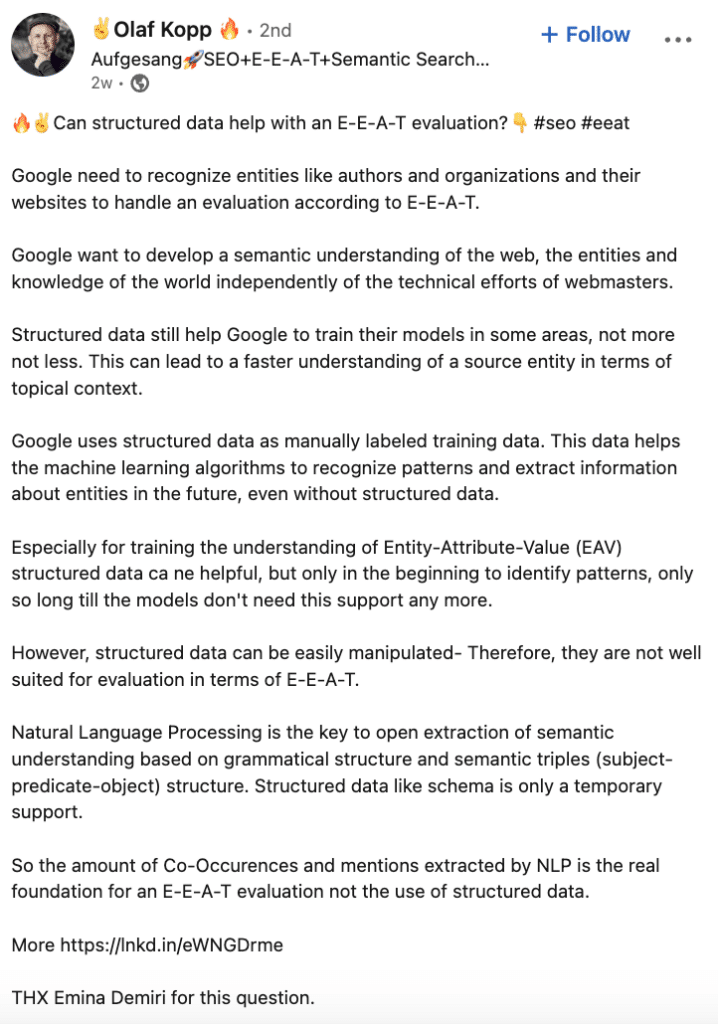
Building topical authority is not easy. Long gone are the days when you could fake it till you make it and simply write a few pieces about a topic and be considered an expert. Just look at the impacts of the latest helpful Google content update had on websites that failed to recognise old SEO tactics are just that: old.
Content Pillars in Social Media
The other area in content marketing that often gets connected to content pillars is social media. Just look at the results for content pillars. A nod to the SEO section of this blog – if you are an SEO, thinking content pillars are just related to SEO!
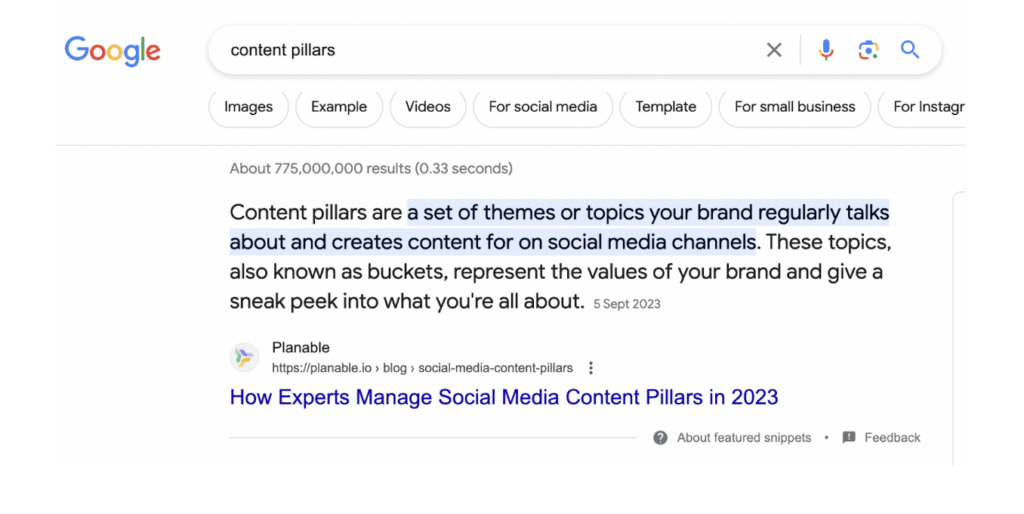
Similar to SEO, content pillars in social media are essentially topics your brand will be posting about on their social media accounts. They are a great way to frame your social media strategy in line with your brand and ensure that everything you are posting has a purpose that’s directly connected to your company goals. And not posting everything but the kitchen sink!
Ensure you fully understand the audience you are trying to reach, their goals, challenges and needs. Create your social media personas and align your topics to them.
At Vixen, we use content pillars in our social media calendar planning. Each post is visibly connected to a content pillar, and they are audience and platform-specific. For example, your audience on LinkedIn might be different from your Instagram audience.

Final Thoughts
We’ve spoken about two channels that are currently associated with the idea of content pillars: SEO and social media. But it would be wrong to think about them in a vacuum. These days, it is not enough to do this on one channel because that is just not how the modern buyer buys! The channel algorithm is also getting smarter – it’s all about the blend and building that topical authority across.
This is because the buying journey is not linear, and most buyers will have several different touch points with you before they buy. Rather than spending hours trying to attribute what can’t be attributed, use that time to really think about what your content pillars will be about and plan for distribution and repurposing. Align your channels so that they talk about the same topics and build your topical authority holistically.



